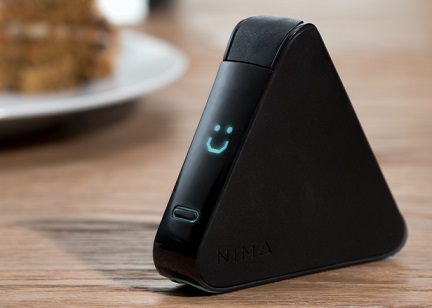 People who have celiac disease or gluten allergies are must thoroughly monitor every ingredient for a meal, including ones found on product labels, to ensure no wheat, rye, or barley is listed. It is even more difficult to monitor ingredients at a restaurant, due to lack of accurate item lists and cross contamination in kitchens. An estimated one in every one hundred and thirty-three Americans suffer from celiac disease, preventing them from eating out as much as they would like to.
People who have celiac disease or gluten allergies are must thoroughly monitor every ingredient for a meal, including ones found on product labels, to ensure no wheat, rye, or barley is listed. It is even more difficult to monitor ingredients at a restaurant, due to lack of accurate item lists and cross contamination in kitchens. An estimated one in every one hundred and thirty-three Americans suffer from celiac disease, preventing them from eating out as much as they would like to.
6SensorLabs, a startup company in San Francisco, has recently created a new device that provides an easy solution to determining if a meal is gluten-free. The device, called Nima, is small enough to fit into a pocket and discreet enough to use at a restaurant table to quickly find if you can eat the food in front of you.
To use Nima, the user simply has to put a small portion of the meal that they want to test into a disposable capsule. The capsule is inserted into Nima’s sensor unit; if a smiley face appears on the screen the food is gluten-free and if a sad face appears the meal contains gluten.
Using a combination of chemicals and a grinding process to break down the food and dissolve it into a blend of enzymes and antibodies, the device then runs a test to determine if there is any trace of gluten. From soups to baked goods, Nima is able to provide precise results, up to 99.9% accuracy, as long as each part of the meal that could contain gluten is tested. With this new technology, 6SensorLabs’ device can potentially change the life of every individual suffering from gluten allergies, minimalizing health concerns and providing them peace of mind when eating out.
Labeling is an important process for all industries, not only consumer goods. Whether you require a label applied to a carton, individual tags applied to each part, a logo or a serialized 2D matrix laser marked on each assembly, Eclipse can provide you with a cost-effective competitive solution for any size production.
Source: LiveScience
